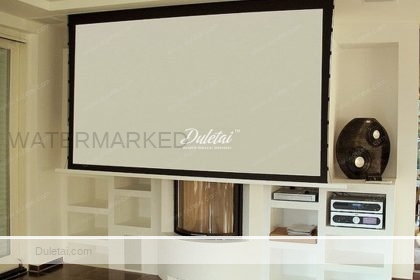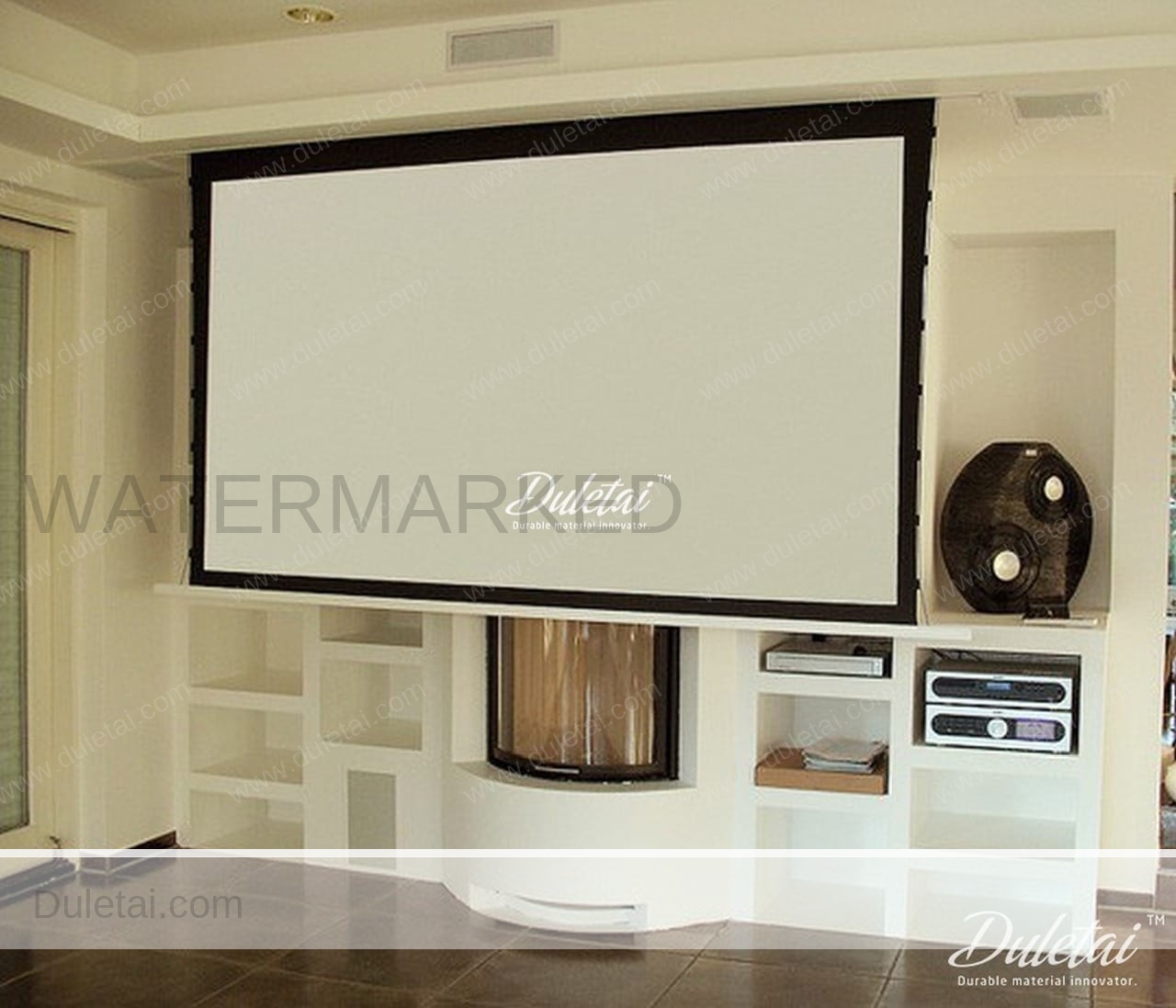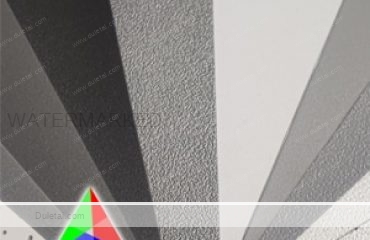
Views: 685
When picking a projection screen, there are some key elements to consider before you acquire. These consist of acoustic infiltration, colour reproduction, comparison, weave as well as black backing.
Eventually, it’s the weave that will figure out the quality of sound penetration with a marginal amount of damping. The weave also establishes whether there will be a moiré concern with your projector.
Moiré impact is possibly the greatest challenge in designing a great acoustic projection screen. Ever wonder why individuals spend so much cash on projection screens instead of simply hanging up a bed sheet? Well, the normal weave of a bed sheet provides a patterned series of little holes that overlap with the field of pixels from a digital projector. By themselves, neither pattern is recognisable at a distance however, together, they create vertical, horizontal and diagonal lines (artefacts) that truly reduce the picture high quality.
Severe situations appear like the image is being watched via the mesh on a screen door.
Regular projection screens are designed to not show aesthetic artefacts like moiré, however it could still plague acoustic screens. A loosened weave, off-angled weave or the sieve-like pattern of a perforated screen could easily overlap with the electronic projection of 1080p or LCOS resolution creating this issue. It’s unlikely that you’ll encounter an acoustic screen that could not at the very least handle the resolution of a 720p projector, but the greater the projection resolution the greater the probability of moiré. The inescapable option will certainly be a resolution that is so fine that it will be practically identical to the remarkable lines of a cellulose picture.
Opening needle vs loom
Perforated displays utilize a strong PVC product that has been perforated with thousands of holes, generally less compared to 0.3 mm in size. This allows noise to penetrate the material while stopping light from going through to illuminate the wall surface behind it and develop a double forecasted image that will certainly spoil the discussion.
Weave, nonetheless, is made on a loom much like the way a bed sheet is woven, other than the weave pattern should go to a particular angled angle. The majority of acoustically transparent products are not THX licensed. Some individuals consider woven projection screens to be superior to the perforated products in regards to damping. Weave products (when done right) tend to be less susceptible to suffering from moiré than the garden-variety perforated screen does.
Although there are carefully made perforated acoustic projection displays that do carry a THX certification, they tend to be much too pricey, as in “if you have $10,000-$15,000 laying around to get a projection screen after that it’s not too costly” sort of means. As for the other 98% people, the weave ought to do its job completely, allowing for noise to breathe with it with less damping compared to punched material does.
That being said, there are three main problems with woven screens that can be argued– light penetration, moiré, and bad colour temperatures. Since the white part of woven projection screens is in fact clusters of white string, there is a possibility for a shift in colour temperature level leaving the screen a touch too much on the yellow, green, blue or red end of the noticeable light spectrum. When it comes to light infiltration, it develops two possible problems: double-imaging and low gain reflectivity.
A dual photo is a phenomenon created when the predicted light conveys its image on a fabric (un-backed) screen and then makes a second picture on the wall behind it that is bright enough to be seen by the customer. As a result of the offset distinction in between the projection surface area as well as the wall surface behind it, a highly disruptive dual image is made that ruins the video clip side of the presentation. The remedy is to consist of a black-backing comprised of acoustically clear black fabric. Although it does little bit versus light loss, it does avoid double-imaging.
Ultimately, moiré is caused when the weave is as well loosened or if it is woven at an incorrect angle. Either way triggers a pattern conflict with an electronic projector creating vertical, straight or angled line patterns. A lot of woven screens are made to fit 720p to 1080p resolutions however it’s worth exercising caution in buying one for the brand-new LCOS projectors. Put in the time to go over efficiency with screen maker initially.
Although many individuals lean favourably toward woven acoustic material, perforated product is not necessarily the awful choice that it’s sometimes constructed out to be. It does have its benefits. There are a few THX licensed brand names that will execute well in the majority of media space atmospheres. Also, the ordinary perforated acoustic material normally works fairly well with a 720p projector. It even has a benefit over woven projection screens in relation to not experiencing double-imaging.
The drawback is that only one of the most costly perforated products do their duties in an universally appropriate fashion. Entry-level perforated displays tend to easily succumb to moiré effect. Additionally, the common perforated product just does not supply the acoustic penetration that many individuals intend to listen to. The small openings that consist of approximately 10% of the screen surface area are exactly what is relied upon to get as much sound through as feasible, without damping way too much, yet it’s difficult not to visualize just how much recover, also prior to acoustic screening is done.
Ultimately, anticipate to pay a higher price for acoustically clear product because even more enters into its design as well as manufacturing. Aim to obtain a screen that is proportionately valued to the projector being made use of which is about 1/3 to 1/2 the projector price.


